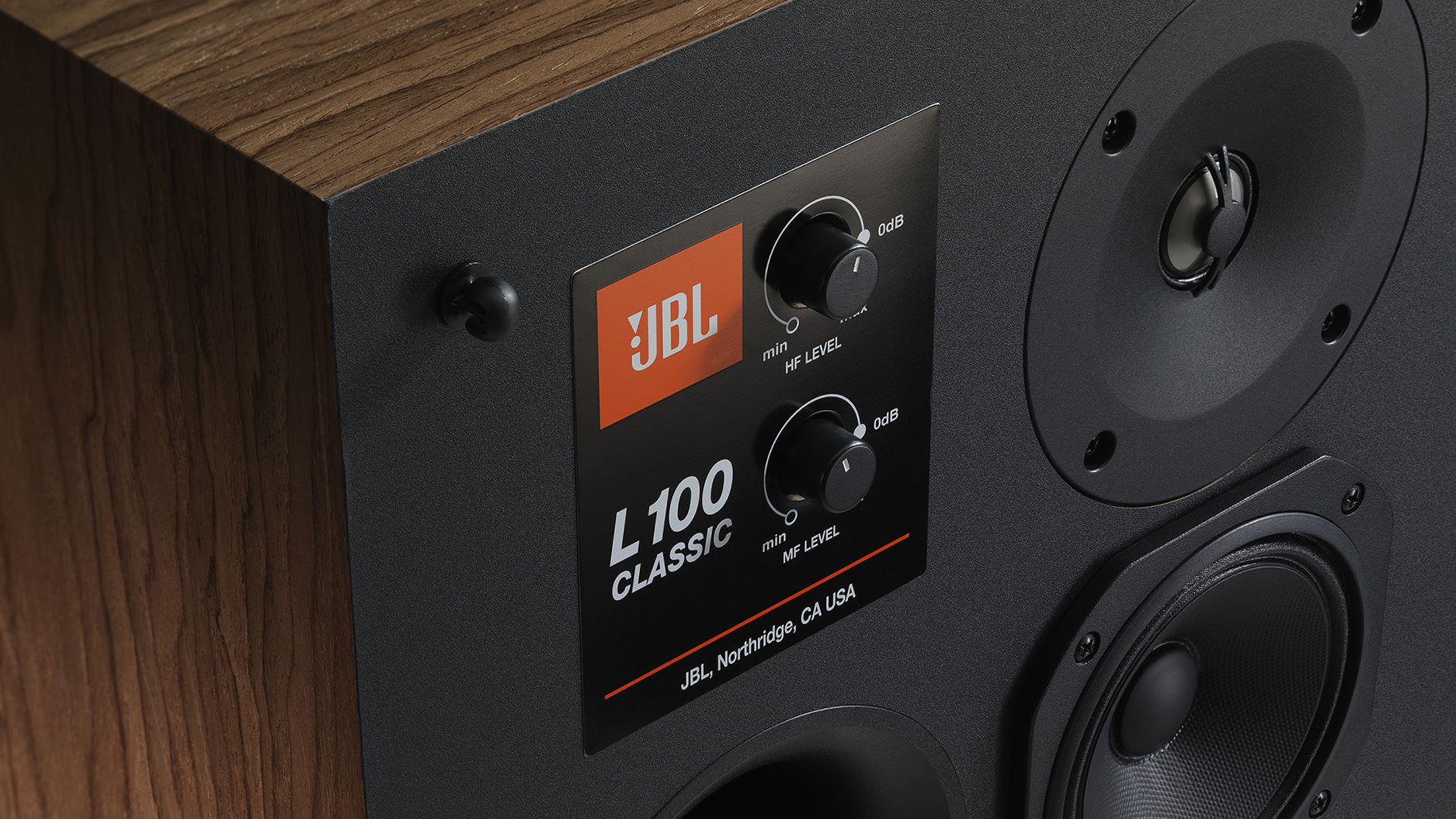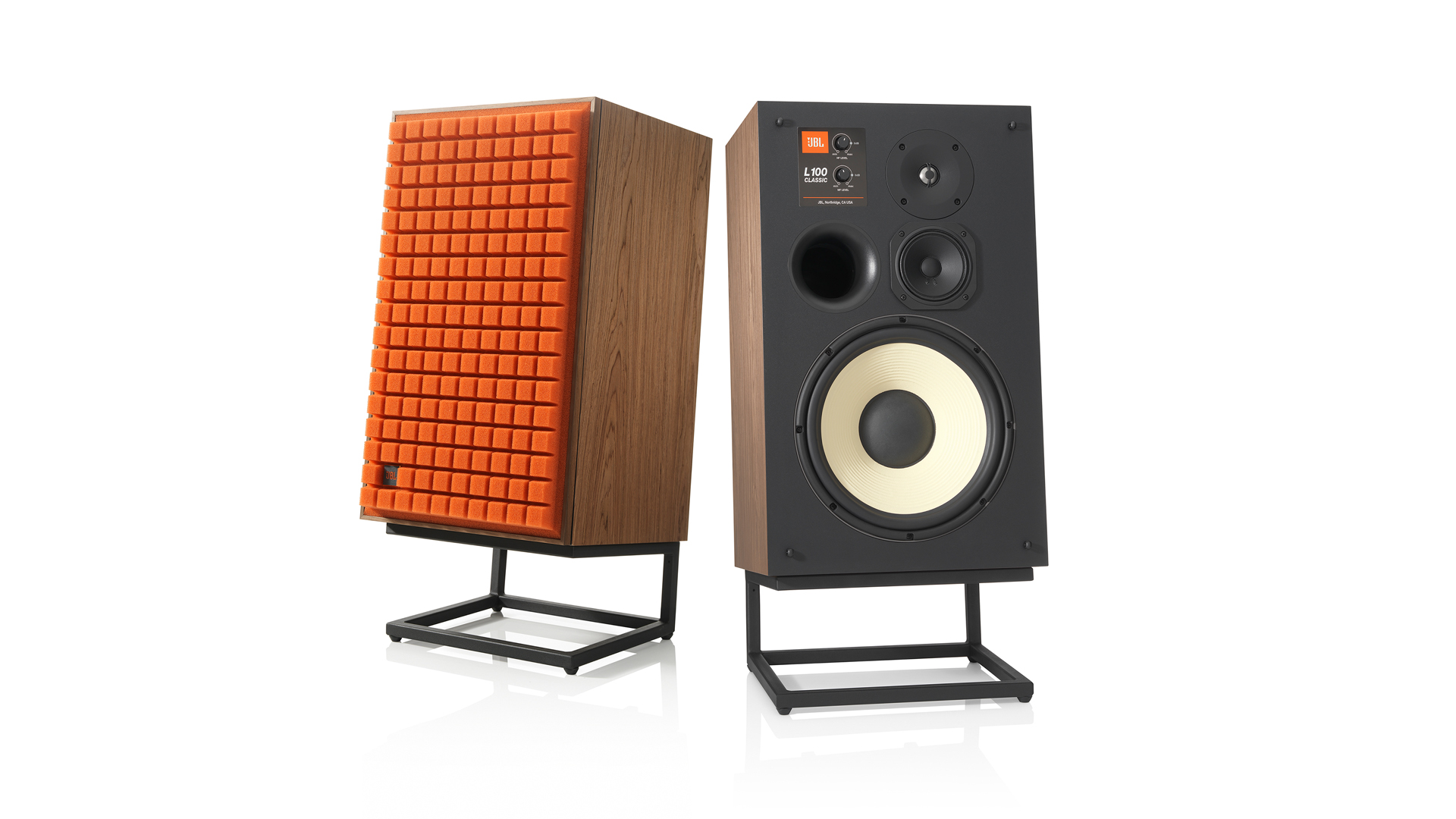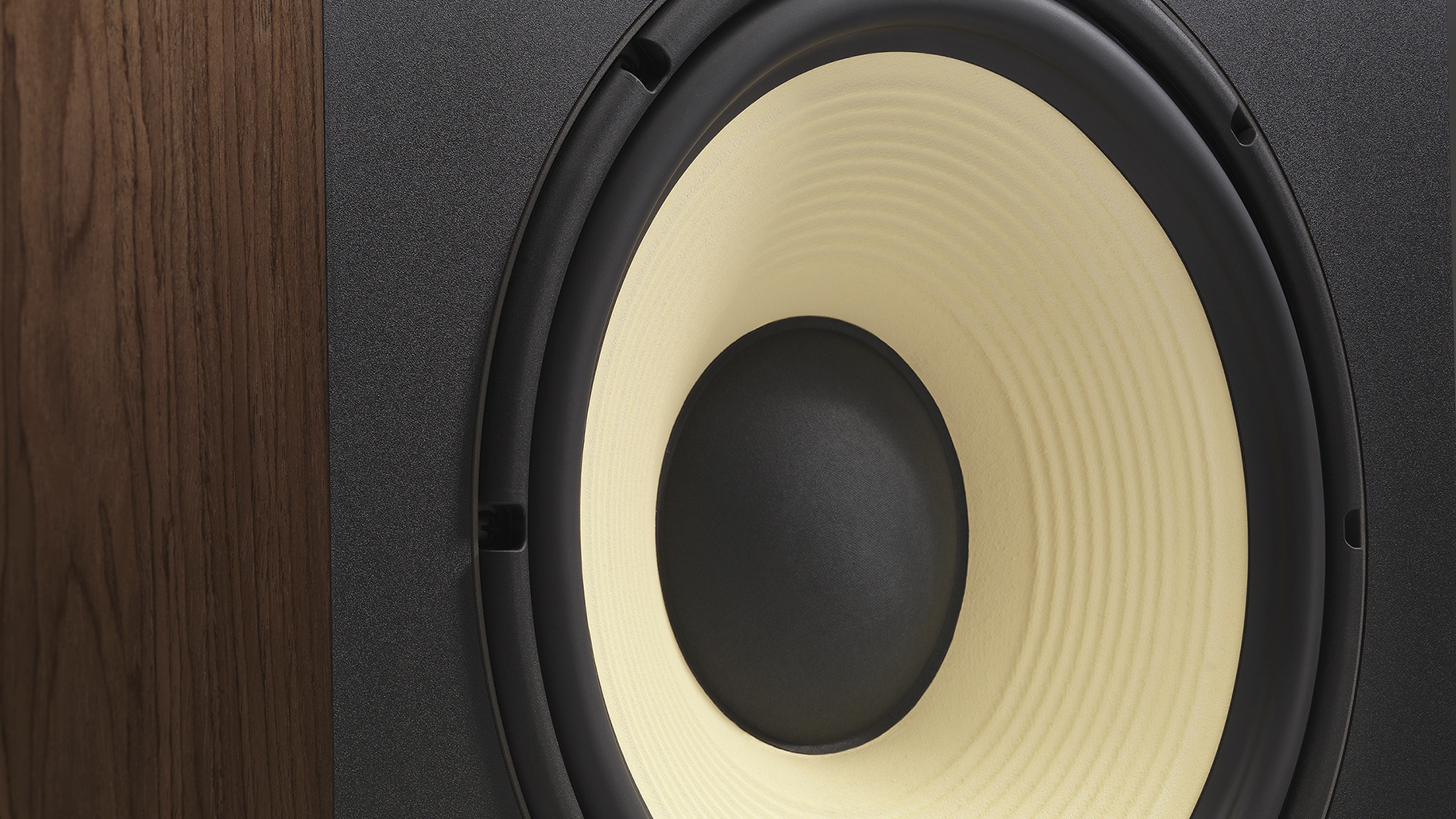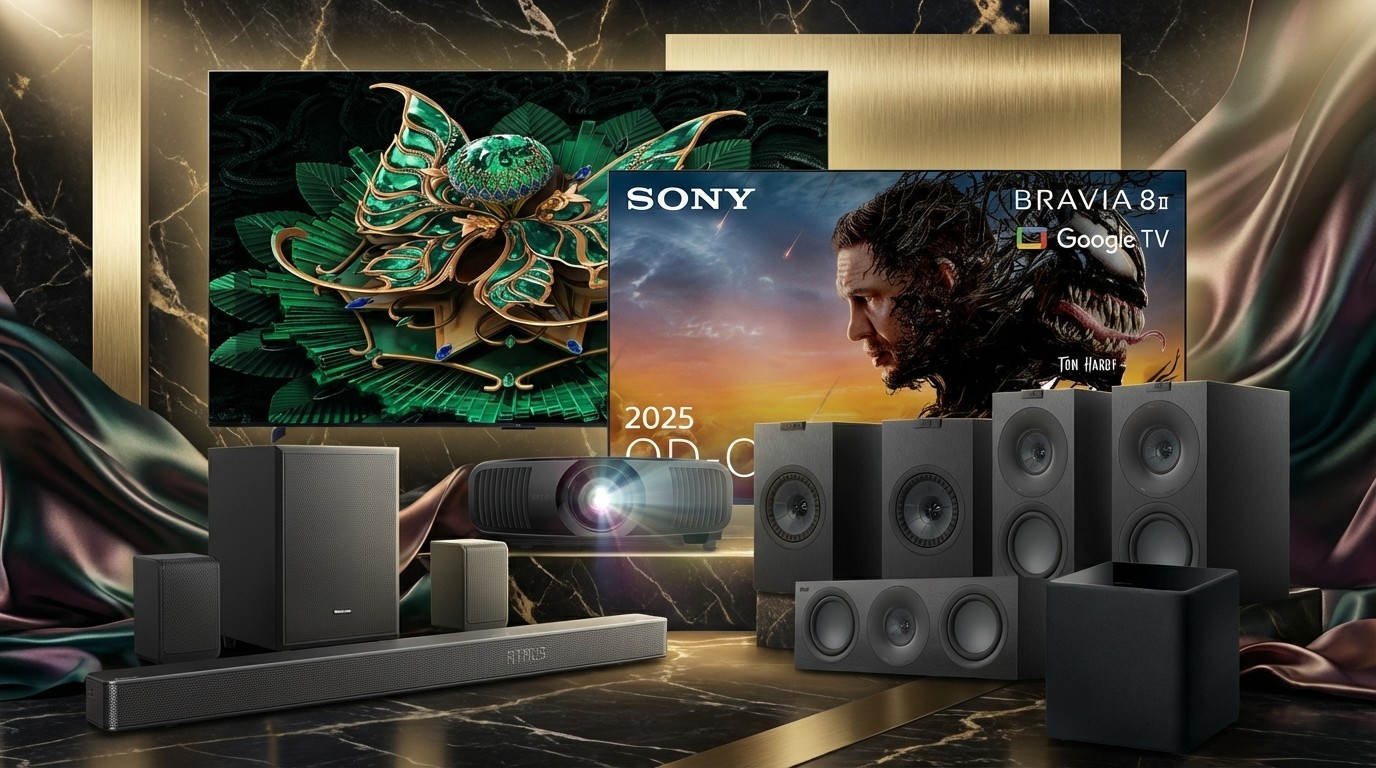What Hi-Fi? Verdict
The L100 Classics may lean heavily on retro appeal, but their unusual blend of sonic strengths make them a viable alternative to the very best of their modern rivals
Pros
- +
Impressive dynamics
- +
Taut and powerful low frequencies
- +
Entertaining presentation
Cons
- -
Orange grille is hardly subtle
Why you can trust What Hi-Fi?
UPDATE: The JBL L100 Classic speakers have been discontinued and replaced by the L100 Classic MkII. Check out the JBL L100 Classic MkII news and our guide to the best speakers available right now.
Retro is in, and that’s a fact not lost on JBL. Established in 1946, the company is one of the oldest hi-fi manufacturers around. Over the years, it has made some mightily impressive speakers for use in recording studios, concert venues, cinemas and, of course, the home, but the original L100 remains the most iconic product the company has ever made.
The L100 came out in 1970 and sold by the truckload, becoming the best selling model in the brand’s history. It also entered into pop culture as the speaker shown in the famous Maxell ad, with the man seated in a chair experiencing a tornado like force of sound coming from the JBLs.
Fortunately, JBL understands that retro appeal and romance only get you so far. Though the Classics are carefully designed to emulate their predecessor’s appearance and size, they are an all-new design using the best current technology and engineering the company can deliver at the price.
Build

These are true three-way standmounters that JBL, rather laughably, still refers to as bookshelf models. They measure a generous 64cm tall and have about the frontal area of a small fridge. We’d like to see the bookshelf that these fit on and still sound good.
The company recognises this and makes a pair of low, welded metal frame stands that lift the speakers around 20cm off the ground and tilt them back to fire towards the listener. At £325, these stands (called the JS-120) aren’t cheap either, but we suspect most owners will end up buying them, or at least using them as a bargaining chip with the dealer.
The Classic’s overall build is good, though not overly luxurious. The front and back of the L100s is painted black, but other panels are walnut veneered – surprisingly, there is no other choice of finish. The veneer is neatly applied and the cabinet itself feels solid, no doubt helped by the hefty V brace on the inside. The original version didn’t have such things and its cabinet was a more resonant affair as a result. A weight of almost 27kg helps with the impression of quality too.
The latest hi-fi, home cinema and tech news, reviews, buying advice and deals, direct to your inbox.

Frequency response 40Hz-40kHz (-6dB)
Sensitivity 90dB
Max power 200W
Impedance 4 Ohms
Dimensions (hwd) 63 x 39 x 37cm
Weight 27kg
Grilles have never been much of a consideration, but with these speakers it matters. The original L100s were known for their distinctive orange foam grille and JBL has provided this option again. The new grille looks striking, as does the optional blue version, though we suspect most people will end up choosing the black. The original’s foam grilles deteriorated quite noticeably over time, turning to dust in fairly short order, thanks in part to the paint used on them. Needless to say JBL has sorted this out with the new versions.
While the grille colour and retro design are talking points, we’re more interested in that chunky 30cm bass driver. This may be styled to look like the original’s drive unit, but it’s a modern, massively built unit with a cast chassis, powerful motor system and a ribbed paper pulp cone. Together with that gaping front-firing port – and let's not forget the large cabinet – the promise is of high volume capability and lots of bass.
This bass driver hands over to the 13cm midrange unit at 450Hz. The midrange also uses a paper pulp cone, but in this case it’s coated with a polymer for improved resonance control. A titanium dome tweeter deals with the rest of the frequency range from 3.5kHz up to around 40kHz (that upper figure is within -6dB limits).
While paper cones were part of the equation for the original version of the L100, though admittedly far less evolved in composition, you wouldn’t have found a titanium tweeter back then. The one now fitted to the Classic has a soft surround to damp dome resonances and a shallow, dished waveguide plus an acoustic lens to control dispersion. It’s all thoroughly modern in execution, with only the visuals to reflect any link back to the first JBL model.
Compatibility

To the left of the tweeter and midrange you’ll find controls to adjust their output. We keep these on their default 0dB settings for most of our test, though can see uses when the speakers are positioned less than optimally or if you just want to pep up the sound a little.
The L100 Classics are pretty sensitive speakers, rated at 90dB/W/m, but their nominal impedance is claimed to be 4ohm, which suggests that it’s wise to use an amplifier with a bit of grunt. We employ our reference 200W per channel Gamut D200i for most of the test, but also try Naim’s Uniti Star all-in-one system (rated at 70W per channel) with decent results.
The JBLs are clear enough to show the large gap in transparency between our reference Naim NDS/555PS music streamer and Gamut D3i/D200i amplifier combination and the Uniti, but are unfussy enough to sound enjoyable with both.
Sound

That’s really the key with the L100 Classics. They’re about having fun and delivering a huge slice of entertainment rather than outright analysis of the recording. That doesn’t mean they’re not detailed or insightful – as their rendition of Stravinsky’s The Rite Of Spring proves. With this piece, they deliver a hugely rousing performance, one that brims with savage dynamics and truly convincing authority.
As expected, the combination of large bass driver and generous cabinet delivers an impressively powerful bass performance, but instead of the unwieldy sledgehammer approach we were expecting, we get class-leading agility.
The L100s render deep bass frequencies with the kind of ease and finesse that smaller, but more overtly high-tech rivals such as B&W’s 805 D3s or KEF’s equally capable Reference 1s, struggle to do. There’s lovely texture to lows and some impressive definition when it comes to discriminating between different bass sounds.

Move up the frequency range and you’ll find a crisp midrange and clear treble. At these higher frequencies, the L100s don’t quite sound as sophisticated, even or open as those more conventional alternatives. But they’re still insightful enough to clearly reveal production differences between Miles Davis’s Kind Of Blue and something more modern, such as the Broadchurch OST by Olafur Arnalds.
Stereo imaging is also pretty good. The L100 Classics paint a decently expansive soundstage with precisely located sounds and instruments. There’s not quite the space around those sounds we’d like, nor the same impression of outright depth, but it’s not a damaging shortfall.
We play Massive Attack’s Heligoland and the JBL’s sonic presentation works well. They are in their element, throwing out a wall of sound that impresses with its scale, drive and energy. They’re composed, even at high levels, and have a huge amount of headroom with dynamics.
Timing, that ability to deliver the interplay of instruments with confidence, is good enough for the L100s to convey the changing momentum of the music well. If you want punch and purpose these speakers are definitely for you. Surprisingly, they remain engaging at lower volume levels where alternatives start to sound lifeless, so late night listening remains firmly on the menu.
Of course, to get this kind of performance you need to take a bit of care with positioning. In our test room, we place the JBLs just over a metre from the rear walls and well clear of the side. We also angle then in slightly towards the listening position to solidify the stereo imaging.
Verdict
The JBLs aren’t flawless – no piece of hi-fi is – but, in our opinion, none of their shortcomings come close to being deal-breakers. While the JBLs cede to rivals in some respects, their blend of engineering choices – big cabinet, three-way configuration with large paper-coned bass driver and high sensitivity – yields results that those same rivals can’t match.
If you judge hi-fi on the ability to entertain rather than the ability to analyse, these are one of the most appealing pairs of speakers at the price. And you’d have to be soulless not to be just a little pleased that products with this much charm and character still exist.
SCORES
- Sound 5
- Compatibility 4
- Build 4
MORE:
Read our B&W 805 D3 review
Read our KEF Reference 1 review
What Hi-Fi?, founded in 1976, is the world's leading independent guide to buying and owning hi-fi and home entertainment products. Our comprehensive tests help you buy the very best for your money, with our advice sections giving you step-by-step information on how to get even more from your music and movies. Everything is tested by our dedicated team of in-house reviewers in our custom-built test rooms in London, Reading and Bath. Our coveted five-star rating and Awards are recognised all over the world as the ultimate seal of approval, so you can buy with absolute confidence.

